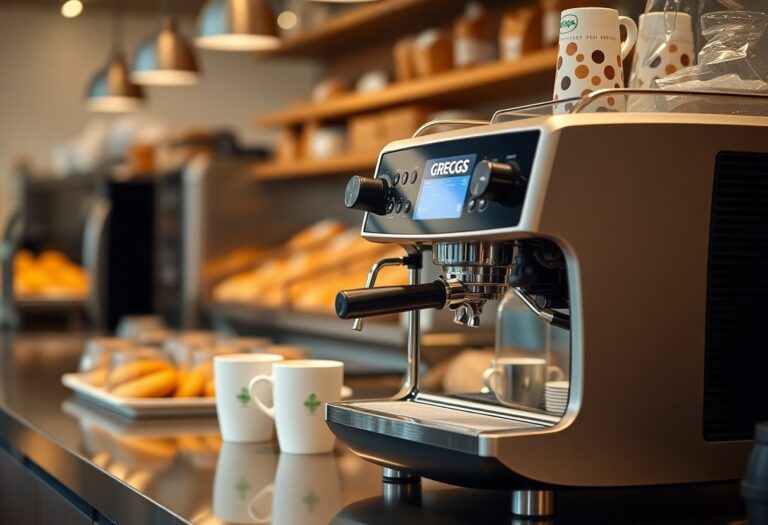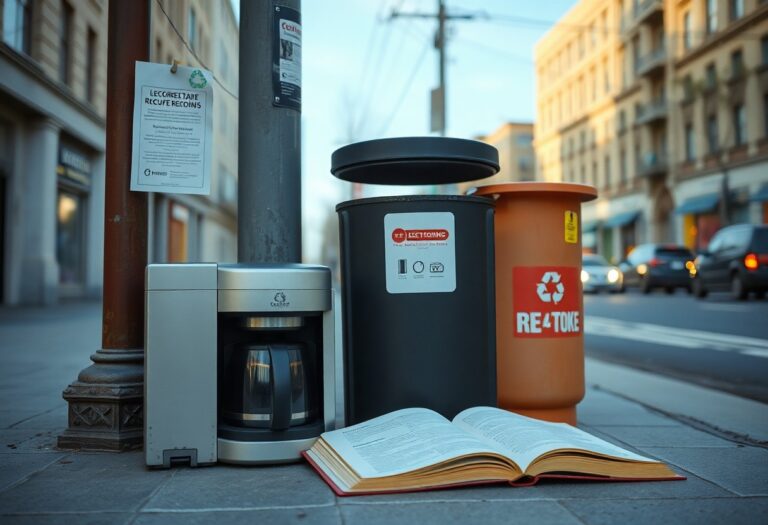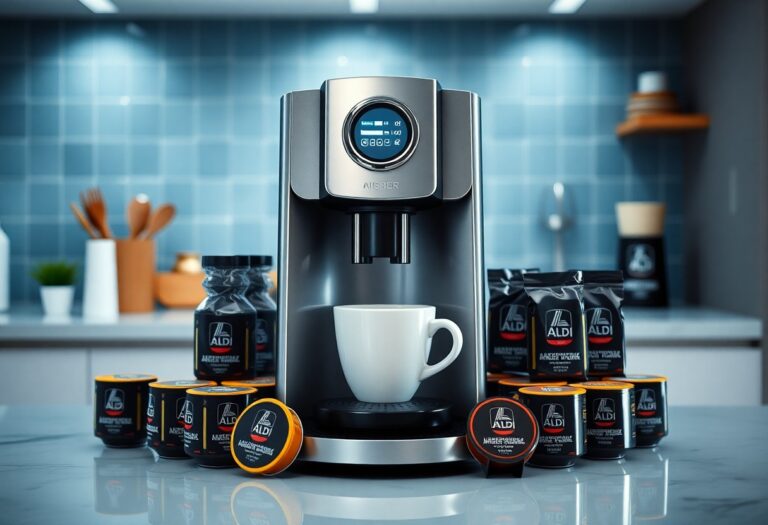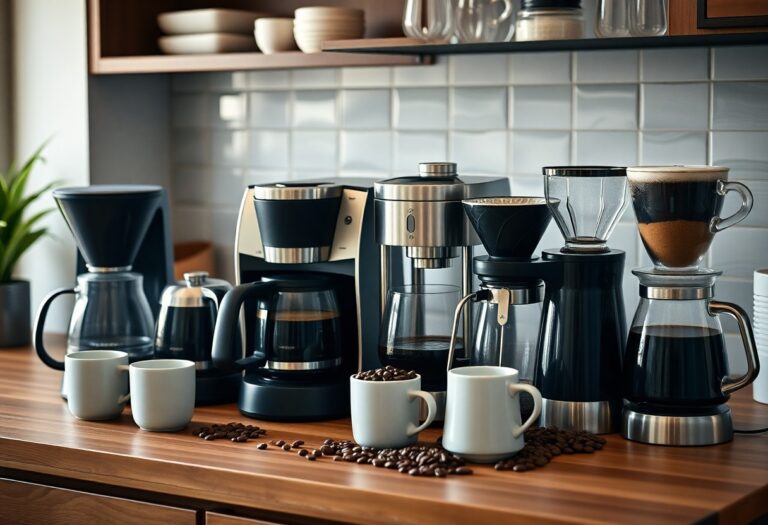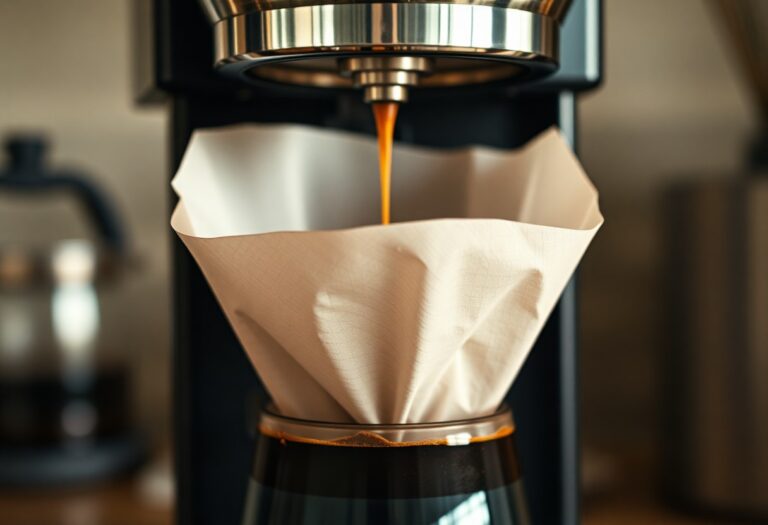What Coffee for a Coffee Machine – General Bean Guide
Just as the right ingredients can elevate a dish, choosing the right coffee for your machine can transform your morning routine. In this guide, you’ll discover how to select the best coffee beans for your specific machine, ensuring that every cup you brew is packed with flavor. From understanding roast levels to recognizing bean types, this comprehensive overview will help you make informed decisions that align with your taste preferences. Let’s explore the necessarys of coffee beans and unlock the full potential of your coffee machine.
Key Takeaways:
- Select beans based on your coffee machine type; different machines require specific grind sizes and roast levels.
- Freshness is imperative; always choose beans that have been roasted recently for optimal flavor.
- Experiment with different bean origins to discover unique flavor profiles; single-origin beans can offer distinct tastes.
- Consider the brewing method when selecting coffee; espresso, drip, and cold brew all have different ideal bean characteristics.
- Store beans properly in an airtight container, away from light, moisture, and heat to maintain freshness.
Sourcing Quality Beans for Your Machine
Finding high-quality coffee beans is key to maximizing your coffee machine’s potential. Look for beans that are freshly roasted and packaged to preserve their rich flavors. Prioritize local roasters or specialty coffee shops that offer single-origin beans, as they often provide traceability and can share detailed tasting notes that help you choose the perfect match for your palate.
The Impact of Bean Origin on Flavor Profile
The geographic origin of coffee beans significantly influences their flavor characteristics. For instance, beans from Ethiopia tend to have fruity and floral notes, while Colombian beans often carry a balanced, nutty profile. Understanding these distinctions can help you select beans that align with your flavor preferences and brewing style.
Essential Certifications and What They Mean
When selecting coffee beans, keep an eye out for certifications like Fair Trade, Organic, and Rainforest Alliance. Each certification signifies distinct standards in quality and ethical sourcing practices. Fair Trade ensures fair wages for farmers; Organic indicates the absence of synthetic pesticides and fertilizers; Rainforest Alliance focuses on sustainability and environmental preservation.
Opting for certified beans not only supports responsible practices but also influences the coffee’s flavor. Fair Trade coffee often results in improved living conditions for farmers, which can lead to better care for their crops. Organic beans might showcase unique flavors due to their natural cultivation processes, while Rainforest Alliance certified coffee is maintained in harmony with local ecosystems, promoting biodiversity. Familiarizing yourself with these certifications will enhance not only your coffee experience but your impact on the environment and coffee-growing communities.

Grinding Techniques: The Key to Unlocking Flavor
Grinding your coffee beans appropriately is a fundamental step in enhancing the flavor profile of your brew. The grind size influences extraction rates and can determine whether your coffee tastes overly bitter or lacks depth. Depending on your coffee machine, adjusting grind settings allows for better control over your brew’s complexity and richness. Investing in a reliable grinder can significantly impact your home-brewing experience, setting the stage for discovering nuanced flavors hidden within your coffee beans.
Matching Grind Size with Your Coffee Machine Type
Each coffee machine type requires a specific grind size to optimize flavor extraction. For instance, espresso machines benefit from a fine grind, facilitating quick and thorough extraction under pressure. In contrast, French press enthusiasts should opt for a coarse grind, allowing for adequate steeping without over-extraction. Drip coffee makers typically thrive with a medium grind. Adjusting your grind size to match your equipment ensures you bring out the best in your chosen coffee beans.
How Freshness Affects Grind and Brew Quality
Freshness plays a pivotal role in both the grind and brewing process, impacting the ultimate taste of your coffee. Once ground, coffee beans rapidly lose their flavor, with a significant percentage of oils and aroma dissipating within minutes. Aim to grind your beans just before brewing; this practice enhances the vibrancy of flavors and guarantees a more aromatic cup. Storing your whole beans in an airtight container also promotes longevity, preserving their freshness for longer durations.
The moment you grind your coffee beans, they begin to oxidize, leading to a deterioration of important oils that contribute to flavor and aroma. Studies show that ground coffee loses around 60% of its freshness within 15 minutes. This highlights the importance of grinding only what you need for a single brew session. Opt for a burr grinder over a blade grinder, as the former offers a consistent particle size that facilitates even extraction, further enhancing your coffee’s taste and ensuring each cup is as delightful as intended.
The Roast Spectrum: Navigating Intensities and Notes
Exploring the roast spectrum opens up a world of flavor intricacies that can enhance your coffee experience. Each roast level—light, medium, and dark—carries distinct flavor profiles and aroma contributions that can significantly influence your brew. You may find yourself drawn to the brightness of light roasts, the balanced layers of medium, or the robust richness of dark roasts. Understanding these differences allows you to select beans that perfectly match your preferred coffee drinking style.
Light, Medium, Dark: What Each Roast Brings to the Cup
Choosing between light, medium, and dark roasts comes down to flavor intensity and aroma. Light roasts often showcase bright acidity, floral notes, and fruity flavors, making them lively and refreshing. Medium roasts strike a balance with rounded sweetness, subtle acidity, and flavor depth, leading to a smoother cup. Dark roasts, on the other hand, provide a bold, full-bodied experience characterized by deep, smoky notes and lower acidity, catering to those who enjoy a more intense coffee flavor.
Understanding the Nuances of Specialty Coffee
Specialty coffee focuses on quality, sourcing, and sustainability, often resulting in uncommonly vibrant flavors and unique characteristics. By exploring beans labeled as specialty, you’re plunging into a world governed by strict grading standards, where scores above 80 on a 100-point scale signify exceptional quality. Factors such as origin, processing methods, and varietal play significant roles in the taste and aroma of your coffee. Each sip can reveal intricate notes like caramel, chocolate, or spices, elevating your daily caffeine ritual into a sensory adventure.
Familiarizing yourself with the nuances of specialty coffee can dramatically enhance your enjoyment. For example, an Ethiopian Yirgacheffe may surprise you with its distinct blueberry notes and floral aroma, whereas a Colombian Supremo could offer more traditional chocolate flavors with a smooth finish. The diversity within specialty coffee means that with each cup, you’re not just tasting a drink but experiencing a story—from the farmers who cultivate the beans to the unique environment in which they’re grown. This appreciation adds layers of meaning to your coffee journey, making it even more fulfilling.
Brewing Methods and Their Bean Compatibility
Specific brewing methods call for different types of coffee beans to unlock the best flavors. Factors, such as grind size, water temperature, and brew time, influence how the beans interact with your machine. Does It Matter What Coffee Beans I Use With My… This is vital to ensure that you’re not just brewing coffee, but craft coffee that speaks to your palate.
Espresso vs. Drip: Choosing Beans for Your Machine
For espresso machines, select dark roasted beans, which provide the bold, rich flavors and balanced crema vital for a high-quality shot. Conversely, drip coffee makers shine with medium to light roasted beans, allowing the bright flavors and aroma to unfold over a longer brew cycle.
Single-Origins vs. Blends: When to Use Each
Single-origin beans are perfect for when you seek to explore specific flavor profiles, showcasing the unique characteristics of a particular region. Blends are more versatile, providing a balanced taste that works well in various brewing styles. Each serves a distinct purpose in crafting your coffee experience.
Single-origin coffees originate from one location, giving you flavors that reflect the unique soil and climate conditions of that region. For instance, Ethiopian Yirgacheffe offers bright, fruity notes, ideal for specialty brewing methods like pour-over. In contrast, a blend is curated to create a well-rounded cup, often combining beans from multiple regions. This synergy can enhance familiarity and comfort, making it a go-to for everyday coffee drinkers. Whether you prefer the adventure of single-origins or the stability of blends, each option offers an opportunity to elevate your brewing experience.

Troubleshooting Common Bean Issues
Working with coffee beans often poses challenges that can affect flavor and aroma. Identifying these common issues can lead to better brews. For instance, stale beans can result in a flat taste, while improperly stored beans might develop moisture or foreign smells. Understanding the causes behind these defects not only enhances your coffee experience but also empowers you in your brewing journey.
Identifying Flavor Defects and Their Causes
Detecting flavor defects involves tasting for undesirable notes such as sourness, excessive bitterness, or a cardboard-like aftertaste. These issues can stem from various sources, including over-roasting, poor storage conditions, or bean quality. For instance, if your coffee tastes overly sour, it may signal under-extraction during brewing or stale beans that have lost imperative oils. Being mindful of these factors allows you to troubleshoot effectively.
Adjustments for Achieving Consistent Taste
To achieve consistent flavor in your brews, consider making adjustments to brewing time, grind size, and water temperature. Each element plays a vital role in how flavors are extracted from the beans. For instance, dialing in your grind size can help control extraction; a finer grind usually leads to a richer, more intense flavor, while a coarser grind often results in a lighter brew. Adjusting the water temperature to between 195°F and 205°F also helps extract the right balance of flavors for optimal taste delivery.
Consistency in brewing often hinges on repetition and small tweaks to your current process. Keeping track of grind sizes, brewing times, and water temperatures used can help you formulate a baseline to work from. If your coffee seems overly sour, try increasing the brewing time or using a finer grind. Conversely, if bitterness is an issue, using a coarser grind or lowering the water temperature can create a more even extraction. By systematically adjusting these elements, you will find your brew hitting the right flavor notes more reliably over time.
Conclusion
Drawing together the insights from this guide, selecting the right coffee for your coffee machine involves understanding the different types of beans, roast levels, and grind sizes that best suit your brewing method. Consider your personal taste preferences and the characteristics of your machine to optimize your coffee experience. By making informed choices, you can elevate your daily ritual and enjoy a rich and satisfying cup that aligns with your unique palate.
FAQ
Q: What types of coffee beans are best for coffee machines?
A: The best types of coffee beans for coffee machines largely depend on personal preference, but generally, Arabica and Robusta beans are popular choices. Arabica beans have a smoother, sweeter flavor with hints of fruit and sugar, making them ideal for those who enjoy a milder cup. Robusta beans, on the other hand, are stronger and more bitter, often preferred for espresso due to their higher caffeine content and thicker crema. Blends of these two types can also provide a balanced flavor profile.
Q: Should I use pre-ground coffee or whole beans in my coffee machine?
A: Using whole beans is typically recommended for the best flavor and freshness. Grinding coffee beans just before brewing maximizes the taste and aroma, as coffee starts to lose its freshness quickly once ground. If using a coffee machine with a built-in grinder, opt for whole beans. However, if convenience is a priority, pre-ground coffee can still yield satisfying results, especially if stored properly in an airtight container.
Q: What roast level is ideal for coffee machines?
A: The ideal roast level depends on individual taste, but a medium roast is often a safe choice for most coffee machines. It strikes a balance between the natural flavor of the beans and the roasting process, showcasing a variety of taste notes without being overly bitter or acidic. Dark roasts are rich and bold but can mask some flavor nuances, while light roasts tend to be more acidic and bright, appealing to those who enjoy a distinct flavor profile.
Q: How should I store coffee beans for optimal freshness?
A: To keep coffee beans fresh, store them in an airtight container in a cool, dark place away from heat, moisture, and light. Avoid keeping beans in the refrigerator or freezer, as these can introduce moisture and odors. Instead, opt for a dedicated coffee canister or any opaque container with a tight seal. For best results, only buy as much coffee as you can consume within a few weeks to ensure maximum freshness.
Q: Can I use flavored coffee beans in my coffee machine?
A: Yes, flavored coffee beans can be used in coffee machines, adding a unique twist to your brew. However, it is advisable to use flavored beans in dedicated machines to prevent cross-contamination of flavors, especially with stronger blends. Additionally, be mindful that the added flavors may alter the natural taste of the coffee, so choose blends that you feel will complement your palate.


